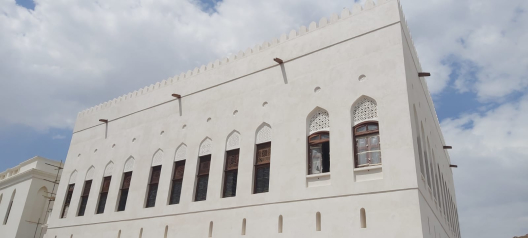Today, we celebrate 20 years of Oman being an ICCROM Member State! We take this opportunity to share updates on a rewarding project between ICCROM and the National Museum of Oman to restore historic homes in the capital city, Muscat.
ICCROM, through our Sharjah Regional Office in the United Arab Emirates (UAE), and the National Museum of Oman began collaborating in 2018 to restore and conserve two traditional homes ('bait' in Arabic) and a new structure annexed to the two historical buildings. In the spirit of adaptive reuse, the homes in Old Muscat will become spaces of cultural immersion.
Two of the houses being restored - Bait Sayyid Nadir bin Faisal and Bait Sayyida Muzna bint Nadir - date back to the late 18th century, when the former was Oman's first prime minister. A few years later, the latter house was built for his daughter, Sayyida Muzna. These homes are excellent examples of traditional Omani vernacular architecture and are among the few remaining in Muscat.
The third house in this project is Bait al-Banian, a new construction inspired by a traditional home that once stood on the same foundation. The building will serve as an extension of the National Museum offices.
ICCROM has assisted these efforts with technical support, primarily in the form of architectural and structural surveys and architectural documentation. We committed to providing the National Museum of Oman with scientific methods and techniques to conserve and adaptively reuse these historical structures based on solid historical research and to restore the two houses to their original state as much as possible using traditional materials and techniques.
We are proud to have accomplished many activities within this project, including conserving the structure of Bait Sayyida Muzna, restoring the prototype using traditional materials and techniques, restoring and instituting technical studies, and researching and using traditional local materials and construction techniques wherever possible.
The extensive process of these restoration and conservation works will be detailed in a future publication to allow for knowledge dissemination throughout the region and beyond.

